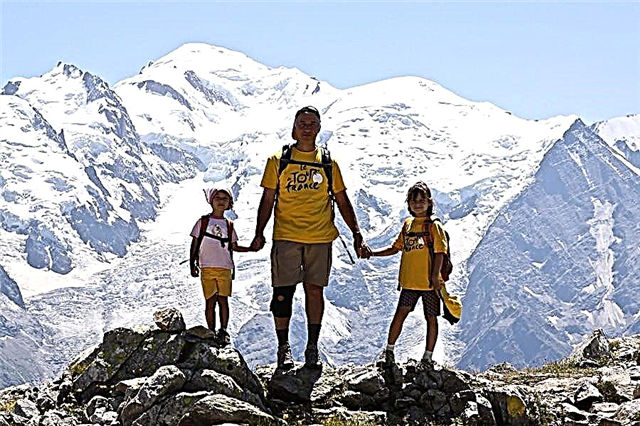What could be better than a weekend at the dacha? Fresh air, long walks, and if there is a river with a sandy beach, then there is an opportunity to swim and run barefoot. You can, of course, do physical labor, dig up a garden for your grandmother, or build a birdhouse with your dad. Rest for every taste.
What a pity that troubles can happen on such wonderful days. A barefoot baby steps on a sharp object, such as a nail, lying in the ground. The little man is in tears, his parents do not know what to do.
Features of the wound
Stab and stab wounds are injuries that are deep and narrow. They usually appear when a sharp object penetrates deep into the tissues.
These wounds are very insidious. On the one hand, if these wounds are not complicated, they heal relatively quickly. On the other hand, they often become infected. Puncture and stab wounds are often closed tightly, preventing blood from oozing out, due to which a bruise forms around it. And a dangerous infection develops in the wound.
Other features of wounds can be listed:
- Due to deep penetration, a vessel (vein or artery) can be damaged, as well as a nerve ending.
- Such wounds are more likely to become infected.
- Suppuration is often possible.
- If the object has been in the ground for a long time, it may contain tetanus and gas gangrene spores.
- In case of unsuccessful removal of a foreign body or simply under an unfavorable set of circumstances, the tendon can be damaged.
When is it necessary to seek help?
If such a misfortune occurs, be prepared to seek help from the nearest emergency room.
 Especially if:
Especially if:
- the child complains of a feeling of numbness or cannot move a leg;
- the leg is swollen, it hurts a lot, the edges of the wound are turned outward;
- discharge or an unpleasant odor appears from the wound;
- there is a throbbing pain or itching in the wound area;
- the temperature has risen.
First aid
If the nail has gone through, do not try to pull it out yourself!
In other situations, first aid includes several actions:
- reassure the child;
- wash your hands;
- wash your baby's feet with water. Try not to pour water on the wound, wash only intact skin;
- if a sharp object does not remain in the wound, but it is bleeding, do not rush to stop the blood.
- if the wound does not bleed, do not force the blood out;
- flush the wound with hydrogen peroxide. Pour it on the wound without regret;
- take sterile wipes and a bandage and apply a bandage that does not press on the wound;
- cold can be applied to reduce pain. To do this, wrap ice or freeze in a towel and attach it to a bandage;
- seek advice from the nearest emergency room. Do not give up on antibiotics prescribed by your doctor. In this situation, they will be the least evil;
- check the child's vaccination certificate. In accordance with the national vaccination schedule, any of these vaccines must be given: DTP, ADS-M, Pentaxim, Infanrix. Vaccination is carried out at 3, 4, 5, 6, 18 months, then at 7, 14, 18 years, then every 10 years;
- if there was no vaccination, immunoglobulin or tetanus toxoid is administered in a hospital setting;
- choose suitable shoes, they should not press. If the incident happened in the summer, give preference to leather slippers. If trouble happens at home in winter, try to find the looser shoes. Also, shoes should be made from natural materials;
- socks need to be changed often enough to avoid infection.
What not to do:
- do not self-medicate;
- do not pull out a foreign body if it is deep (shallow - it is not more than 2 cm);
- don't expect such a wound to heal on its own. This option is possible. But you should not risk the life and health of loved ones so much;
- do not wear too tight bandages. It is important that the blood supply is maintained.
How to treat a wound if the leg is swollen?
Be prepared for such wounds to hurt for a long time. The next day, swelling and pain may increase.
 If there are no other manifestations of the disease, such as a rise in temperature, irritability, lethargy, pallor of tissues around the wound, purulent discharge from the wound, then the following actions are possible:
If there are no other manifestations of the disease, such as a rise in temperature, irritability, lethargy, pallor of tissues around the wound, purulent discharge from the wound, then the following actions are possible:
- Clean the wound with an antiseptic solution.
- Make a bath with manganese permanganate solution or saline.
- Apply a bandage with one of the antibiotics (Levomekol, Baneocin, Argosulfan) to the wound.
Dear parents, all medications should be prescribed by a doctor in accordance with the age and state of health of the child. Better to spend more time than jeopardizing the health of your children.
Possible complications
 Tetanus is a real life infection. According to statistics, 25% of those infected die from it. For this reason, the earlier you seek medical attention, the better your chances of recovery.
Tetanus is a real life infection. According to statistics, 25% of those infected die from it. For this reason, the earlier you seek medical attention, the better your chances of recovery.
The incubation period for tetanus is 1 to 14 days.
The first symptoms will be fever, wound pain, irritability, swallowing disorder, sleep disturbance. Later, convulsions appear. They can be provoked by light, the murmur of water, and harsh sounds.
Clinical manifestations of tetanus last up to 4 weeks, and complete recovery occurs after 2 months. Often the illness leads to disability.
Be careful, if a person gets tetanus, long-term immunity is not formed. Re-infection is possible.
Gas gangrene is another serious complication of puncture wounds. The causative agent of this disease, like tetanus, remains in the ground for a long time and, once it gets into a wound, begins to multiply and release toxin.
 The first symptoms of gas gangrene - the skin around the wound is pale, the edges of the wound seem to bulge outward, if you press the skin around the wound, you will feel that inside, under the skin, crunching snow. The general condition of the child is difficult, the temperature is up to 41 ° C, excessive weakness or, on the contrary, strong excitement is characteristic.
The first symptoms of gas gangrene - the skin around the wound is pale, the edges of the wound seem to bulge outward, if you press the skin around the wound, you will feel that inside, under the skin, crunching snow. The general condition of the child is difficult, the temperature is up to 41 ° C, excessive weakness or, on the contrary, strong excitement is characteristic.
Treatment is carried out only in a hospital setting. An operation is performed, antibiotic treatment is performed.
In order to prevent the disease, it is recommended to administer anti-gangrenous serum in the first hours after injury.
Be careful and careful! In the event of injury, do not delay treatment, especially in children. Enjoy your weekend at the dacha.
Article rating:



